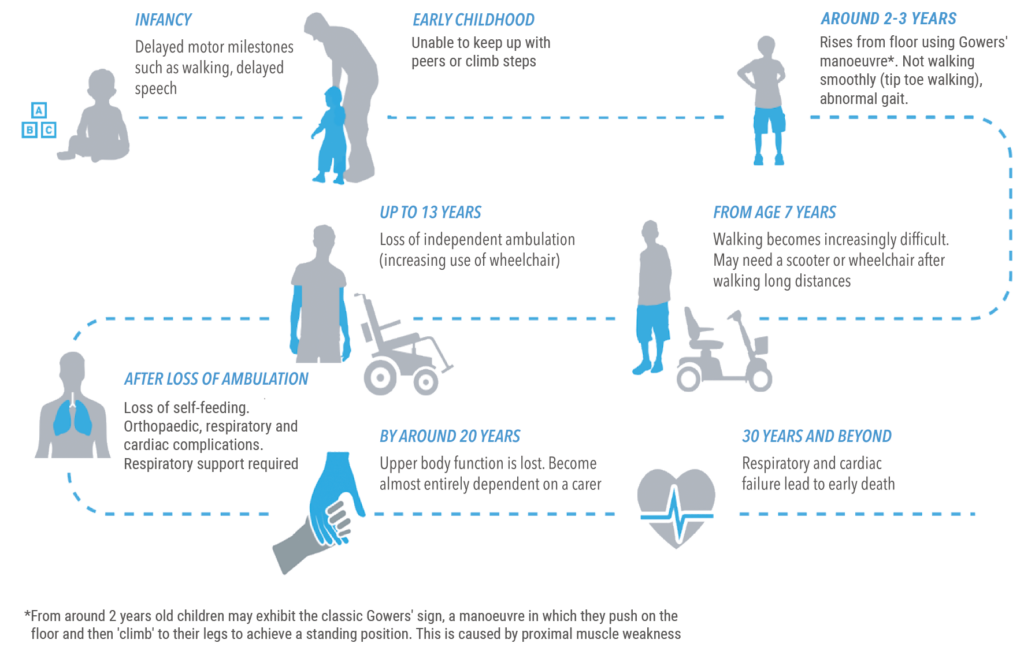DMD causes muscle wasting and weakness due to a mutation in the dystrophin gene, resulting in a lack of a protein called dystrophin.1
If the body does not have enough dystrophin, muscle tissues become damaged.3
Find out what causes Duchenne muscular dystrophy
Over time, this causes problems with movements such as getting up from the floor and walking.1,3
Learn more about the symptoms of Duchenne muscular dystrophy
Which parts of the body does DMD affect?
DMD affects all muscles of the body, including muscles in the arms and legs, as well as the heart muscle and those involved in breathing. This can lead to problems with:1,3
Moving
Breathing and coughing
Heart function
Eating
How does Duchenne muscular dystrophy progress over time?
DMD causes muscle weakness that gets worse over time. This means that walking, standing, and everyday tasks become increasingly difficult.3,4
Eventually, the muscles that control the heart and lungs stop working, although this typically takes many years.3,4
The progression and severity of DMD symptoms may differ for each individual, but most will experience some of the stages shown in the picture below.3–7
While there is no cure for DMD at present, people with DMD are living for longer than ever before, and with the right care may live into their 30s and beyond.3,6,8
Find out more about living with Duchenne muscular dystrophy

Did you know that DMD primarily affects boys?1
Learn more about Duchenne muscular dystrophy causes and inheritance
Find out more

Duchenne muscular dystrophy inheritance and causes
Review factors that influence the development of DMD.

Duchene muscular dystrophy symptoms
Understand the key symptoms to be aware of in DMD.

Duchenne muscular dystrophy diagnosis
Early diagnosis of DMD is important, find out more on how this is done.

The ultimate guide to Duchenne muscular dystrophy
Everything you need to know about DMD, all in one place.
References
1. National Institute of Neurological Disorders and Stroke. Muscular dystrophy: hope through research. Available at https://www.ninds.nih.gov/Disorders/Patient-Caregiver-Education/Hope-Through-Research/Muscular-Dystrophy-Hope-Through-Research [last accessed September 2022].
2. Eunice Kennedy Shriver National Institute of Child Health and Human Development. Muscular dystrophy. Available at https://www.nichd.nih.gov/health/topics/factsheets/540
[last accessed September 2022].
3. Goemans N, et al. Eur Neurol Rev. 2014;9:78–82.
4. Birnkrant DJ, et al. Lancet Neurol. 2018;17:251–267 [Part 1].
5. Noritz GH, et al. Pediatrics. 2013;131:e2016–e2027.
6. van Ruiten HJA, et al. Arch Dis Child. 2014;99:1074–1077.
7. Bushby K, et al. Lancet Neurol. 2010;9:77–93.
8. Muscular Dystrophy Association. What is DMD? Available at https://www.mda.org/sites/default/files/2019/11/MDA_DMD_Fact_Sheet_Nov_2019.pdf [last accessed September 2022].
© 2022 PTC Therapeutics.
GL-DMD-0656 | October 2022